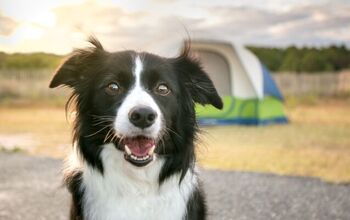Havamalt


About Havamalt
The Havamalt is a wonderful little pooch who brings together the people-loving characteristics of the Havanese and the playful personality of the Maltese for a fun, easy-going family dog that gets along with kids and other pets. He doesn’t do well when left on his own for long periods, so needs a home where his owners can dedicate time to his care and well-being.
The Havamalt brings the people-loving Havenese together with the playful Maltese for a fun family dog.
The Havamalt is a Designer Dog that likely originated in the United States in the 1980s when various mixes of pure-bred dogs were used to create smaller, hypo-allergenic or gentler variations of some of the more popular breeds. Today, they can be first generation (two purebred parents) or second generation (two Havamalt parents).
Because he isn’t a pure-bred dog, the Havamalt is not recognized by the American Kennel Club (AKC). Both parent breeds however are long-term members; the Havanese joined AKC’s “toy” group in 1996 while the Maltese joined the same group back in 1888.
The Havamalt’s food should be a top quality kibble that reflects his size, age and level of activity (or lack of). Because joint issues can often plague smaller dogs as they age, obesity should always be of concern so don’t plan to free-feed your dog, provide him with 2 to 3 small meals throughout the day. The Maltese DNA in your dog means he may be prone to low blood sugar (hypoglycemia) so care should be taken to keep to a set feeding schedule.
The affectionate Havamalt craves human companionship.
The clever little Havamalt is quick to pick up commands, learn quickly and considered relatively easy to train. Early socialization is important to ensure he knows how to play nice with kids and other pets, followed by the obedience basics. As with most dogs, a firm, consistent approach that includes lots of verbal praise and rewards for a job well done, will go a long way in bringing out the best in this dog.
Your Havamalt will weigh between 10 to 17 pounds.
The Havamalt is a sweet-natured, affectionate pooch who craves human companionship and has a gentle nature that makes him amenable to children and other animals alike. A great family dog, he is quite loyal to his human pack and doesn’t do well when left for long periods of time, becoming anxious and destructive. His enthusiastic personality means he loves interactive playtime and being the center of attention.
Although many Designer Dogs seem to side-step the health issues that can plague their pure-bred parents, you should always know what your new puppy could inherit. While typically very healthy, the Havamalt might be prone to patellar luxation, hypoglycemia and Legg-Perthes Disease.
You can expect to have your Havamalt with you for between 12 and 14 years.
The Havamalt isn’t an overly active dog and prefers active indoor play to a lengthy walk. That said it’s important to keep him physically fit and mentally stimulated so a short daily walk and interactive playtime including tossing a ball, Frisbee or games that will cause him to spend time with his humans will make him a happy boy.
The clever little Havamalt is quick to pick up commands, learn quickly and considered relatively easy to train.
The Havamalt is recognized by the the Dog Registry of America, Inc. (DRA) American Canine Hybrid Club (ACHC), Designer Breed Registry (DBR), Designer Dogs Kennel Club (DDKC) and the International Designer Canine Registry (IDCR).
Although he is a minimal shedder, the double-coated Havamalt is fairly high maintenance when it comes to grooming and you can expect to brush his long, silky coat out 3 to 4 times per week to keep it mat- and tangle-free. Professional trimming can be done every few months and bathing should be done only as needed to avoid drying out his skin. Because small-breed dogs can experience dental issues you should add teeth brushing to his grooming regimen.
The Havamalt puppy is a people-pleaser from the go get but will require early socialization to ensure he gets along well with other animals. Because of his small size, handling by children should always be supervised to prevent injury to tiny joints. This dog comes from two breeds that can experience joint and bone issues so care should be taking when teaching him to walk on a lead as over-exertion can lead to joint injuries that plague him later in life.
Photo credit: michaelheim/Shutterstock; James Lui/Shutterstock.com; James Lui/Shutterstock.com

Sharing space with three seriously judgy Schnoodles and a feline who prefers to be left alone. #LivingMyBestLife
More by Mary Simpson
























